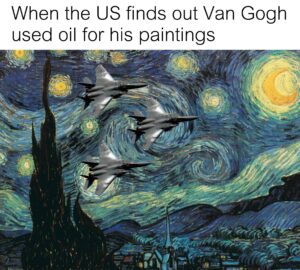The video named ”The Power to Look” expressed clarity, depth, and logic standards for quality. In the video, at first, they clearly explained the strategies to set up a dynamic relationship between artist, artwork, and viewing by giving examples on ”American Gothic” by Grand Wood. Then they elaborate on these strategies by representing the backgrounds of the three artworks and showing us the actual meanings behind the symbols.
The first artwork is the beaded crown from Nigeria. The presenter explained what each symbol reflects and why they are there. For instance, the beaded veil which is the key part of the crown made to protect the subjects of the king from the power of his gaze and to hide the king’s individuality. Also, the birds on the crown represent the women’s support in the community, and the biggest bird on the top stands for the senior wife of the King and reflects social hierarchy. All the information in this part is easy to understand and makes sense. So, they used the clarity and logic standards.
The second artwork is ”Paris Street, Rainy Day” by Gustave Caillebotte. In this part, they dug much deeper into Paris’ social and modernization history to help us to understand the background of this work of art. They gave very detailed information about the steps taken to take the city to a contemporary level by using the logic and depth standards.
The last one is the ”Untitled Film Still #92” by Cindy Sherman. At the beginning of this part, they explained to us the reasons why Sherman created these photo series. Then, they showed us the ”Untitled Film Still #92”. The presenter expressed that in the photo the female subject is cowering on the ground and viewers looking at her from a position of power. And they added since the subject is the director’s herself, she is the one directing our viewing experience. I think, in this part, the presenter used the depth standard very effectively.





